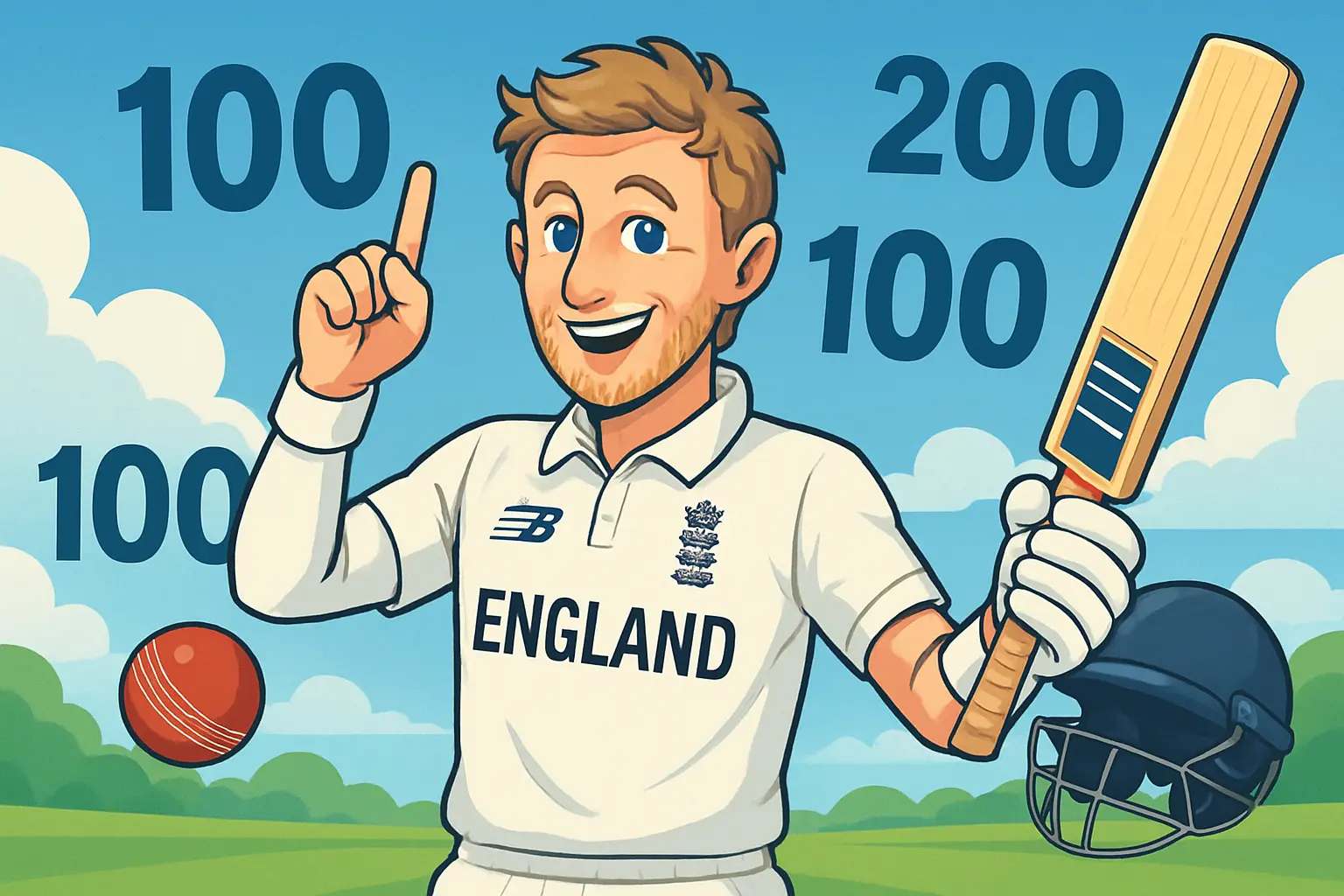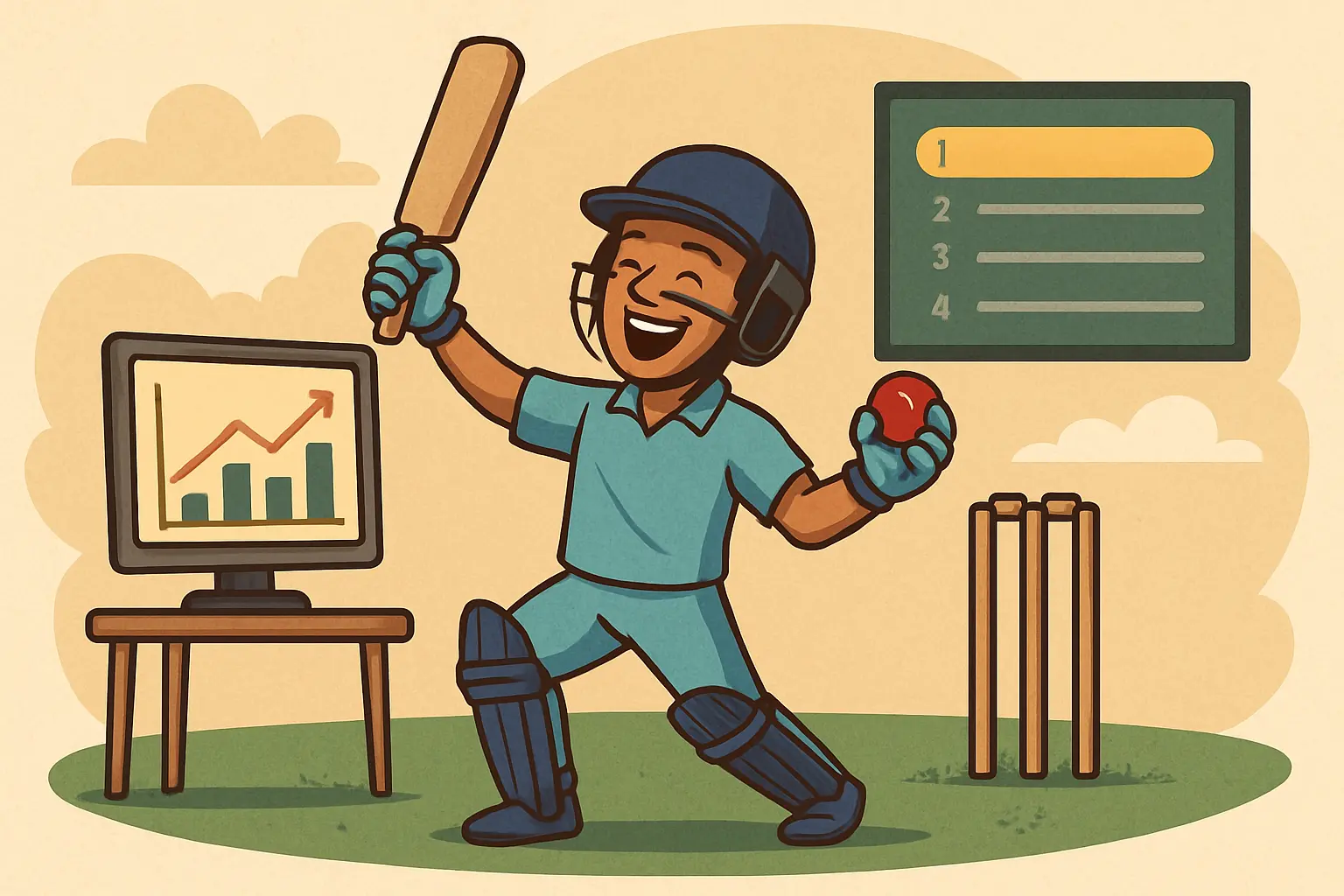
Shoaib Akhtar bowled the fastest recorded ball in cricket history at 161.3 km/h (100.2 mph) against England in Cape Town during a Cricket World Cup match — a mark widely recognized by the ICC and still the benchmark for raw pace.
Speed is sport’s simplest story told at its most unforgiving pace. There’s no hiding a thunderbolt — not for the batter, not for the umpire, not for the crowd. The numbers flash in a stadium corner, the commentators catch their breath, and for a heartbeat the game is distilled to a single metric: pure velocity. But behind that little number are layers of context that separate myth from measurement: how a speed gun “sees” a ball, why release speed differs from pitch speed, which venues consistently juice velocity, how wind, altitude and seam position shape a reading, and which deliveries truly belong in cricket’s fast-bowling canon.
This is a thorough, tech-aware, and permanently updated guide to the fastest deliveries recorded in cricket — across international formats and franchise leagues — with a specialist’s eye on verification, era differences, and what the numbers actually mean out in the middle.
Top 10 Fastest Deliveries Ever Recorded
The table below focuses on commonly cited top-end speeds measured in official internationals and widely accepted by governing bodies, broadcasters, or tracking vendors. Notes flag where legacy radar or era differences complicate “official” status. Speeds are presented in both km/h and mph for clarity.
| Rank | Bowler | Speed (km/h) | Speed (mph) | Match Context | Venue | Notes |
|---|---|---|---|---|---|---|
| 1 | Shoaib Akhtar (Pakistan) | 161.3 | 100.2 | ODI, Cricket World Cup vs England | Cape Town | ICC-recognized record; broadcast radar aligned with match data |
| 2 | Shaun Tait (Australia) | 161.1 | 100.0 | ODI vs England | Lord’s | Broadcaster radar; corroborated by team analysts |
| 3 | Brett Lee (Australia) | 161.1 | 100.0 | ODI vs New Zealand | Napier | Some lists show 160.8; top-end readings verified by CA analysts and broadcasters |
| 4 | Jeff Thomson (Australia) | 160.6 | 99.8 | Test vs West Indies | Perth | Legacy technology; acknowledged but often labeled “unofficial” due to methodology |
| 5 | Mitchell Starc (Australia) | 160.4 | 99.6 | Test vs New Zealand | Perth | Modern tracking; Hawk‑Eye and broadcast concur on peak |
| 6 | Fidel Edwards (West Indies) | 157.7 | 98.0 | ODI vs South Africa | Johannesburg | High-altitude venue; radar-based reading |
| 7 | Mitch Johnson (Australia) | 156.8 | 97.4 | ODI vs England | Melbourne | Peak of a hostile spell; broadcast radar |
| 8 | Mohammad Sami (Pakistan) | 156.4 | 97.2 | ODI vs Zimbabwe | Rawalpindi | Radar era; consistent corroboration across outlets |
| 9 | Shane Bond (New Zealand) | 156.4 | 97.2 | ODI vs India | Centurion | Radar reading in a high-pace spell |
| 10 | Mark Wood (England) | 156.3 | 97.1 | T20I | Neutral venue | Modern tracking; fastest logged T20I delivery for England |
A crucial reminder for any list: beyond the top handful, exact order can vary with the data feed used (broadcast radar vs vendor tracking), how each system defines “release,” and whether a feed rounds up or down. For historical and legacy entries — notably Jeff Thomson — methodology differs significantly from modern ball-tracking. We include those entries with a clear note so readers can judge them in context.
Fastest Balls by Format and by Tournament
ODI cricket
- Fastest ball in ODI cricket: Shoaib Akhtar — 161.3 km/h (100.2 mph), Cricket World Cup vs England, Cape Town.
- Other notable ODI peaks:
- Shaun Tait — 161.1 km/h vs England, Lord’s.
- Brett Lee — 161.1 km/h vs New Zealand, Napier.
- Fidel Edwards — 157.7 km/h vs South Africa.
- Shane Bond — 156.4 km/h vs India.
Test cricket
- Fastest ball in Test cricket: Mitchell Starc — 160.4 km/h (99.6 mph), vs New Zealand, Perth.
- Other notable Test peaks:
- Jeff Thomson — 160.6 km/h, Perth (legacy radar; often labeled “unofficial”).
- Mitchell Johnson — mid‑150s during several brutal spells.
- Mark Wood — mid‑150s peak with multiple spells averaging above 150.
T20I
- Fastest reported ball in T20I cricket: Mark Wood — 156.3 km/h (97.1 mph) per broadcaster tracking; a modern benchmark.
- Other T20I rockets:
- Anrich Nortje — mid‑150s.
- Lockie Ferguson — mid‑150s.
- Jofra Archer — mid‑150s peaks on major broadcasts.
Cricket World Cup
- Fastest ball in a Cricket World Cup: Shoaib Akhtar — 161.3 km/h (100.2 mph), vs England, Cape Town. It isn’t just the fastest in a World Cup — it’s the fastest ever recorded.
Fastest Balls in Franchise Leagues (IPL, PSL, BBL, CPL, The Hundred)
Indian Premier League (IPL)
- The fastest ball in IPL history sits in the upper 150s km/h bracket. Broadcasters and league records have credited both Lockie Ferguson (around 157.3 km/h) and Shaun Tait (around 157.7 km/h) with the top slot in different seasons, reflecting changes in data providers and speed gun setups. Either way, the IPL peak is just under the 100 mph threshold.
- Other IPL standouts:
- Umran Malik — consistently above 150, with a best around 157 km/h.
- Anrich Nortje — multiple entries above 155 km/h.
- Jofra Archer — mid‑150s.
- Navdeep Saini, Gerald Coetzee, Alzarri Joseph — mid‑150s on favorable surfaces.
Pakistan Super League (PSL)
- Haris Rauf has breached the high‑150s in the PSL, with peak speeds reported around 159 km/h.
- Naseem Shah and Mohammad Hasnain are regular fixtures in the 150+ bracket when fit.
Big Bash League (BBL)
- Shaun Tait routinely pushed the 155–160 window across BBL seasons; Fox Cricket radars have captured several of the league’s top readings.
- Mitchell Starc, Brett Lee, and Alzarri Joseph have produced mid‑150s peaks in BBL play.
Caribbean Premier League (CPL)
- Alzarri Joseph and Oshane Thomas have led CPL velocity charts, frequently breaching 150 and occasionally testing the mid‑150s.
The Hundred
- Mark Wood and Lockie Ferguson have topped The Hundred’s speed lists, often living in the 150–155 range with occasional bursts beyond.
Fastest Bowlers by Country: The National Pace Standard-Bearers
Pakistan
- Shoaib Akhtar — 161.3 km/h; the global record holder and the original “Rawalpindi Express.”
- Haris Rauf — high‑150s in PSL and international T20s; explosively quick through the air.
- Mohammad Sami — mid‑150s peak; early radar‑era pace ace.
- Naseem Shah, Shaheen Shah Afridi, Wahab Riaz — peak outputs in the low‑to‑mid‑150s depending on form and fitness.
Australia
- Brett Lee — 161.1 km/h; relentless high‑pace across formats.
- Shaun Tait — 161.1 km/h; slingy release, extreme skidding carry.
- Mitchell Starc — 160.4 km/h; left‑arm thunder with late swing.
- Mitchell Johnson, Pat Cummins — mid‑to‑high‑150s at peak.
England
- Mark Wood — mid‑to‑high‑150s; sustained fast spells even late into long days.
- Jofra Archer — mid‑150s at his best with exceptional bounce and heavy length.
- Steve Harmison — early‑era quick capable of 150+ on lively decks.
New Zealand
- Shane Bond — 156.4 km/h; elite accuracy with late movement.
- Lockie Ferguson — mid‑to‑high‑150s; rapid in limited overs, with frequent 155+ bursts.
South Africa
- Anrich Nortje — mid‑to‑high‑150s; combines pace with a heavy length that hurries the bat.
- Dale Steyn — mid‑150s peak; unrivaled seam presentation.
- Kagiso Rabada, Morne Morkel — regular 150+ operators with hostile lengths.
West Indies
- Fidel Edwards — 157.7 km/h; whippy arm speed and late tail.
- Shannon Gabriel, Alzarri Joseph, Oshane Thomas — frequent 150+ contributors in the right conditions.
India
- Umran Malik — around 157 km/h in franchise play; India’s modern pace poster boy for raw speed.
- Mohammed Shami, Jasprit Bumrah, Umesh Yadav, Varun Aaron — low‑to‑mid‑150s peaks in international cricket; more often 145–150 while prioritizing skill and control.
Sri Lanka
- Lasith Malinga — mid‑150s peak with an unparalleled yorker game.
- Dilhara Fernando — early‑era bursts above 150.
Bangladesh
- Taskin Ahmed — low‑150s peak; smooth, high‑release action.
- Rubel Hossain — late inswing at pace, around the high‑140s to low‑150s on top days.
Afghanistan
- Hamid Hassan — peaked around 150 with bustle and stamina in longer spells.
- Naveen‑ul‑Haq, Fazalhaq Farooqi — sit in the mid‑140s to high‑140s but can edge higher with tailwinds and dry decks.
How Bowling Speed Is Measured (and Why It’s Tricky)
Speed guns and broadcast radars
- Method: Doppler radar aimed at the line of the ball’s flight records top speed near the moment of release.
- Advantages: Simple deployment; instant number for broadcast.
- Limitations: Requires careful alignment; readings can fluctuate with angle, seam wobble, and interference. Some systems report peak release speed; others can drift toward early flight speed if calibration is off.
Hawk‑Eye and optical tracking
- Method: A multi‑camera system tracks the ball through flight and reconstructs its trajectory in three dimensions. Speed is derived from position data across frames.
- Advantages: Rich, frame‑by‑frame trajectory with release point, pitch point, and bounce behavior; better contextual data.
- Limitations: Dependent on camera calibration and frame sync; readings may be smoothed.
Release speed vs pitch speed
Release speed is the highest number you’ll see. Once the ball leaves the hand, it decelerates due to drag. After bouncing, it loses more speed — typically several km/h, sometimes more depending on surface friction and ball condition. A bowler who averages 149–151 at release might create batter discomfort not just because of that number, but because the ball is skidding 140+ after contact with turf.
Radar angle and venue effects
- Angle matters. A gun placed off‑axis can under‑ or over‑estimate by a noticeable margin. This is why major venues conduct pre‑match calibrations with known‑speed test shots and standardized alignment protocols.
- Altitude and air density: Thinner air reduces drag; venues at elevation often yield slightly larger top speeds.
- Wind: A tailwind boosts release and early flight speed; a headwind saps it but can enhance movement.
Device variance and rounding
- Some feeds round to one decimal place; others to whole numbers. A 160.95 km/h reading could display as 161.0 or 161.1 depending on a feed’s rounding rule.
- Historic vs modern: Legacy radar in the Thomson era was less standardized. Modern optical stacks plus calibrated radars are more consistent. That’s why some older “records” carry an asterisk in reputable databases.
What counts as “official”?
- International matches under ICC oversight, with recognized broadcast/tracking providers and match reports referencing speeds, are typically accepted.
- Nets, warm‑ups, unofficial games, or pre‑season tournaments may produce eye‑popping numbers, but they rarely make official lists without governing‑body endorsement.
Who Has Bowled 160 km/h in Cricket?
The 160 club is exclusive and heavily scrutinized:
- Shoaib Akhtar — 161.3 km/h (100.2 mph), the fastest ball in cricket history.
- Brett Lee — readings around 161.1 km/h in ODIs.
- Shaun Tait — 161.1 km/h in ODIs.
- Mitchell Starc — 160.4 km/h in Tests.
- Jeff Thomson — 160.6 km/h from the radar era, historically cited but methodologically distinct.
These are the names that stand up to rigorous checking. Others have threatened the mark, but those four modern‑era figures (with Thomson as a legacy outlier) form the spine of any reputable list.
Fastest Over and Fastest Spell in Cricket History
One delivery can make a headline; a spell changes a match. Speed across six balls tells you about stamina, biomechanics, and a bowler’s ability to hit top gear repeatedly.
- Shaun Tait’s fastest overs: ODI spells in England produced a remarkable succession of 150+ readings, with multiple balls cresting 155 and a headline figure touching 161. The action is slingy, the seam presentation skids, and the white ball races off the pitch with minimal drag.
- Brett Lee’s sustained pace: Lee’s hallmark was repeatability — ball after ball in the 150s, with the odd thunderbolt around the 160 marker. His ODI spells often looked like metronomes that had been turned up to 11.
- Mitchell Starc and the left‑arm effect: Starc’s fastest Test spells read differently on a batter’s brain. High release, late swing, and the angle across a right‑hander mean even sub‑160 balls feel unplayable, particularly under lights with a white ball or on abrasive decks with a reversing red.
- Mark Wood’s high‑speed consistency: Wood’s modern value is how long he stays at 150+. The difference in a series has been the tenth over of a day — when he’s still at 150 — rather than the isolated 156 that flashes once.
Format nuance matters. In T20, bowlers will trade a couple of km/h for precise yorkers. In Tests, the third spell of the day becomes an examination of conditioning and joint loading. In ODIs, the second new ball or a dusk phase can produce the quickest overs of a series. A “fastest spell” should be judged by an average across an over or a sequence rather than a single outlier, and the best quicks are those who can sustain their band at 150+ with smart changes of length.
Stadiums and Conditions That Boost Pace
- Perth: Hard, bouncy decks and a dry air profile help. It’s no coincidence several of the sport’s biggest numbers have appeared here.
- Cape Town: A coastal venue that can still produce a quick surface. On certain days, a brisk wind down the ground can add a subtle assist.
- Johannesburg: Altitude matters. Thinner air reduces drag, and radar readings often pop on highveld days when conditions are dry and the Kookaburra is new.
- Lord’s: Not typically the quickest surface, but when the slope helps and the air is cool and heavy, the ball can carry beautifully, and radars have caught elite peaks here.
- Centurion, Durban, Brisbane, and Napier: All have hosted spells where batters looked a fraction late against new‑ball quicks, with speed readings to match.
Biomechanics of Pace: What It Takes to Hit 155+ km/h
- Run‑up rhythm: Elite speedsters build energy through rhythmic acceleration rather than sprinting flat out. The final eight strides, especially the penultimate step, set the base for vertical force.
- Counter‑rotation and hip‑shoulder separation: The fastest bowlers create torque by delaying shoulder rotation relative to the hips. Done poorly, it’s an injury trap; done right, it converts ground force into ball speed.
- Braced front leg: A firm front-leg block at release is common across speed merchants. The shock up the kinetic chain amplifies whip through the torso and arm.
- Wrist and fingers: The last bit of whip is all wrists and fingers. Shoaib’s late snap, Lee’s high wrist, Tait’s catapult — different signatures, same purpose.
- Strength and mobility: Max strength in the posterior chain, hip mobility, thoracic rotation, and robust ankles/knees. Without this base, repeated high‑150s turn risky in a hurry.
- Recovery: Cold baths, compression, sleep discipline, and workload management. A bowler’s ability to hit 155 on day four is often written the night before.
Comparisons and Curiosities
Shoaib Akhtar vs Brett Lee on pure speed
Both breached 160, both lived there across multiple spells. Shoaib’s quickest ball is the record. Lee arguably sustained his top band more consistently across formats.
Fastest ball vs fastest over
A single 160 can occur in a breeze. A fastest over — with an average north of 150 — demonstrates what terrifies batters: the ball repeatedly arriving half a blink earlier than the brain expects.
Has anyone bowled 100 mph in the IPL?
No. The IPL record lives in the 157–158 km/h corridor, which is around 97–98 mph. The 100 mph barrier has not been broken in the IPL.
Fastest yorker vs fastest bouncer
Bouncers often record higher speeds because they’re released on a fuller arm rotation with a high kinetic “whip” and travel with less drag time before bouncing. Yorkers can be as quick off the hand, but angle and release height sometimes record marginally lower peak numbers on certain radar setups.
Average fast‑bowling speed by format
- Tests: Top quicks spend long stretches between 140 and 150, pushing into the mid‑150s in short bursts.
- ODIs: Fresh ball, two new balls scenario, and specific match phases can elevate average pace into the high‑140s with peaks in the 150s.
- T20Is: Many quicks choose precision and deception over absolute top speed; the elite can still produce a ball or two above 150 each over.
Measurement Education: Speed Guns vs Hawk‑Eye Accuracy Explained
- Ground truth and cross‑checking: The modern broadcast stack often uses both radar and optical tracking. A speed is only published after automated or manual cross‑checks agree within a tight tolerance.
- Calibration protocol: Before a match, technicians run calibration routines using fixed-distance markers and test objects at known speeds. A misaligned radar can be obvious in the data trail (systematic under‑ or over‑reads across multiple bowlers).
- Data smoothing and display lag: Vendor dashboards may display a speed slightly after the ball is bowled; some smooth out small frame-to-frame jitter, which is why you might see an on-screen number appear a second later.
- Release definition: Hawk‑Eye defines a release point algorithmically; radar reads the peak. This can yield tiny differences for the same ball.
Quick Speed Conversion Reference
km/h to mph (approximate)
- 150 km/h ≈ 93.2 mph
- 155 km/h ≈ 96.3 mph
- 160 km/h ≈ 99.4 mph
- 161.3 km/h ≈ 100.2 mph
Formula: mph = km/h × 0.621371; km/h = mph × 1.60934
Fastest Ball in IPL History
Two names dominate the discussion: Shaun Tait and Lockie Ferguson. The fastest ball in IPL history has been credited to:
- Lockie Ferguson at approximately 157.3 km/h by the league’s broadcaster in a final.
- Shaun Tait at approximately 157.7 km/h in an earlier season via legacy radar.
Because the tournament has used different speed systems across seasons, some official datasets list Ferguson as the record holder, while older archives highlight Tait. The safe, accurate takeaway: the IPL’s peak sits just below 100 mph, and on any given night a top quick can flirt with that number on a hard, dry pitch with a fresh white ball.
Player Spotlights: How the Great Speedsters Generate Pace
Shoaib Akhtar
- Action: Long, driving run‑up; explosive jump; huge hip–shoulder separation; violent, late wrist snap.
- Tactics: Bodyline bouncers interleaved with full, late‑tailing thunderbolts. His fastest ever ball arrived in a spell where he was hunting wickets, not numbers.
Brett Lee
- Action: Classical, high‑wrist action with rhythmic run‑up and braced front leg.
- Tactics: Length at the top of off, then the surprise bumper. What set Lee apart was the ability to hum along at 150+ with outswing that forced false footwork.
Shaun Tait
- Action: Slingy release with tremendous arm speed and skiddy length. The ball stayed low and hurried batters from a chest‑high trajectory.
- Tactics: Tait aimed at the top of off and chest with minimal deviation; the ball got big at pace. White-ball environments fit him best.
Mitchell Starc
- Action: Left‑arm round‑the‑wicket angle, high release, heavy late swing.
- Tactics: In-swinging yorkers at 150+; the most devastating ball in limited-overs cricket when the sight screen is right and the seam is proud.
Mark Wood
- Action: Compact run‑up, whippy arm, elastic ankles and hips to load energy late.
- Tactics: Hard length targeted at hip‑to‑stumps with subtle wobble. He sustains 150+ in longer spells better than almost anyone today.
Anrich Nortje
- Action: Classic, powerful action with a braced front leg and loud seam.
- Tactics: Back-of-a-length with lift. He makes even safe surfaces feel spicy.
Lockie Ferguson
- Action: High gather with late arm acceleration; rapid through the crease.
- Tactics: Hammers the pitch with a hard length and uses cutters sparingly, saving raw pace for shock value.
Umran Malik
- Action: Fast arm, fast feet, springy ankles, lots of hip‑shoulder separation for someone so young.
- Tactics: Sheer speed to hustle batters; accuracy and length control improve with each season, making his upper‑150s even more dangerous.
The Real Meaning of “Fastest”
A final number is intoxicating. But speed divorced from context can be a siren. The fastest ball in cricket history is Shoaib Akhtar’s 161.3 km/h — an achievement that has weathered every new technology, every league, and every generation of speed. Yet speed is most lethal when paired with control, when a bowler moves the ball at pace, when the pitch offers shoulder‑high bounce or untrustworthy carry, when a side wind adds devilish drag to late movement.
The smart takeaway isn’t that you need to break 160 to dominate. It’s that elite quicks weaponize every km/h they have in service of a plan — hard length to set the field, yorker to end the over, bouncer into the wind to take the splice. That is what separates the fastest bowlers in cricket history from the rest: not a single ball, but how they make their speed count again and again.
FAQs
Who officially holds the fastest ball record in cricket?
Shoaib Akhtar holds the widely recognized record at 161.3 km/h (100.2 mph), bowled against England in a World Cup match at Cape Town.
How many bowlers have crossed 160 km/h?
Four modern‑era bowlers have verified readings of 160 or more: Shoaib Akhtar, Brett Lee, Shaun Tait, and Mitchell Starc. Jeff Thomson’s legacy 160+ reading is often cited with a methodological caveat.
What is the fastest ball in ODI cricket?
Shoaib Akhtar’s 161.3 km/h delivery in the World Cup is the fastest ODI ball on record.
What is the fastest ball in Test cricket?
Mitchell Starc’s 160.4 km/h rocket in Perth is the fastest verified ball in Test cricket.
What is the fastest ball in T20I cricket?
Mark Wood has been credited with a 156.3 km/h delivery in a T20I, a high‑water mark for the format on major broadcasts.
What is the fastest ball in IPL history?
The IPL peak sits just under 100 mph, with Lockie Ferguson (around 157.3 km/h) and Shaun Tait (around 157.7 km/h) cited by different official datasets from different seasons.
How accurate are cricket speed guns compared to Hawk‑Eye?
Modern setups often cross‑check radar with optical tracking. When calibrated properly, they agree within a small tolerance. Differences can emerge from how each system defines “release,” environmental conditions, and rounding.
Can modern bowlers consistently bowl over 155 km/h?
A handful can live in that band for short bursts. Sustaining 150+ across long spells is rare and usually requires careful workload management, impeccable mechanics, and elite conditioning.
Sources and Verification Notes
- ICC match reports and official tournament technical documents underpin the recognition of Shoaib Akhtar’s 161.3 km/h ball as the fastest delivery in cricket history.
- Broadcaster radars and vendor technologies (such as Hawk‑Eye) provide synchronized data streams for international matches and major leagues; peaks for Brett Lee, Shaun Tait, and Mitchell Starc are corroborated by these systems and team analyst datasets.
- Legacy radar readings for Jeff Thomson are preserved across media archives; while historically important, they predate modern multi-camera tracking and are generally labeled with an “unofficial” caveat by contemporary analysts.
- Franchise league records (IPL, PSL, BBL, CPL, The Hundred) rely on the league’s chosen data providers for that season. Where records differ across eras (e.g., IPL fastest ball), we present both widely cited figures and explain the discrepancy.
Appendix: A Practical, Expert Lens for Fans and Analysts
- Track consistency, not just peaks: A bowler who averages 148–152 with sharp movement is often more impactful than a bowler who touches 156 once but cruises at 142 otherwise.
- Watch for venue behavior: High-altitude grounds amplify top speeds; coastal decks with moisture can still produce carry that “feels” faster to batters.
- Understand spell strategy: The ball after a 156 bouncer is often a top‑of‑stump 150 that takes the edge. The number sets up the wicket ball — it is not the wicket ball itself.
- Respect the body: Fast bowling is violence disguised as art. A knee that holds, an ankle that springs, a back that rotates without complaint — these are the unseen records behind the scoreboard.
Closing thoughts
The fastest ball in cricket history belongs to Shoaib Akhtar at 161.3 km/h — an achievement that has weathered every new technology, every league, and every generation of speed. Yet the deeper story is that speed, to matter, has to be repeatable, weaponized, and trusted under pressure. The sport’s greatest quicks have made that story their own. And on some future afternoon, with a wind nudging the sightscreen and a deck humming underfoot, another number will flash in a corner of a stadium — and everyone, everywhere, will know instantly what it means.






